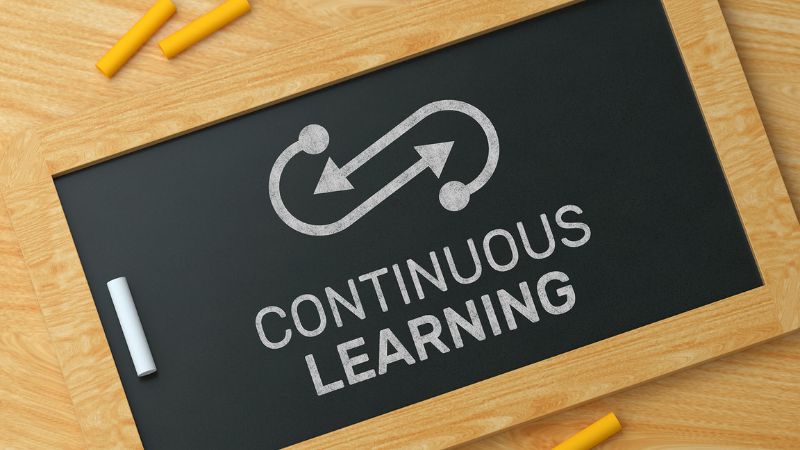
When it comes to success in the competitive corporate landscape, the secret sauce lies in the strength of your human resources. HR partners and employee training play a pivotal role in molding this strength into a tangible, results-oriented form.
Article Outline
| Heading | Subheadings |
|---|---|
| Introduction to HR Partners and Employee Training | Understanding the Basics |
| Importance of HR Partners in an Organization | Role and Responsibilities, Impact on Employee Morale |
| Strategic Importance of Employee Training | How Training Influences Performance, The Role of Continuous Learning |
| The Synergy of HR Partners and Employee Training | Creating a Cohesive Workforce, Leveraging Training for Employee Satisfaction |
| The Process of Employee Training and Development | Stages of Training, Monitoring Progress, Evaluating Impact |
| Role of HR Partners in Employee Training | Identifying Training Needs, Aligning Training with Business Goals |
| Different Types of Employee Training Programs | Skills Training, Mandatory Training, Professional Development |
| How HR Partners Facilitate Different Training Programs | Adapting to Employee Needs, Ensuring Relevance and Engagement |
| The Effect of Training on Employee Retention | Job Satisfaction and Retention, HR Partners’ Role in Retention Strategies |
| Incorporating Technology in Employee Training | E-Learning, Virtual Reality Training, Role of HR Partners in Tech Integration |
| Emerging Trends in Employee Training | Microlearning, Gamification, Personalized Learning |
| How HR Partners Keep Up with Training Trends | Continuing Education for HR, Collaboration with Learning and Development Teams |
| Measuring the Impact of Employee Training | Quantitative and Qualitative Measures, Role of HR Partners in Assessment |
| Case Study: Success of HR Partners and Employee Training | Analyzing a Real-world Example |
| FAQs about HR Partners and Employee Training | Answering Common Questions |
Introduction to HR Partners and Employee Training
As the business landscape morphs, so do the skills needed to navigate it. Amidst this continuous change, the partnership between HR and employee training emerges as the torchbearer guiding the organization towards success. HR partners and employee training not only ensure that employees stay equipped with the skills to perform their roles effectively, but they also bolster their potential to contribute to organizational growth.
Understanding the Basics
While we often throw around the terms ‘HR partners’ and ’employee training,’ understanding their in-depth meaning and implications is crucial. Human Resources partners, often titled HR business partners, serve as a bridge between the management and the employees. They ensure that the HR strategies align with the company’s business objectives.
On the other hand, employee training comprises a series of activities designed to augment employees’ skills and knowledge, enabling them to perform their roles better. When the power of HR partners and employee training comes together, it yields an environment that is ripe for both personal growth for employees and business growth for the organization.
Importance of HR Partners in an Organization

Behind every successful organization, there’s a robust HR team that ensures smooth internal functioning. At the core of this team are the HR partners who lay the groundwork for a harmonious and productive work environment.
Role and Responsibilities
HR partners wear many hats, but their primary role is to align the human resources strategy with the business objectives. They facilitate communication between the organization’s management and its employees, thereby promoting a unified vision.
Key responsibilities of HR partners include:
- Developing HR policies and procedures: They work on creating policies that comply with legal standards and match the organization’s culture.
- Employee relations: They handle grievances, mediate in disputes, and strive to maintain a positive workplace environment.
- Recruitment and selection: HR partners often lead the recruitment process, ensuring that the organization attracts and retains top-tier talent.
- Performance management: They develop performance management systems and coach managers on providing constructive feedback.
- Training and development: They identify employee training needs and help orchestrate suitable training and development programs.
Impact on Employee Morale
HR partners play a vital role in building and sustaining employee morale. They are the go-to people for any employee concerns, from minor grievances to major conflicts. By providing an empathetic ear and working towards conflict resolution, HR partners directly contribute to boosting employee satisfaction and morale.
Moreover, their involvement in shaping HR policies and company culture also indirectly influences the morale. A supportive and positive work environment, fostered by effective HR policies, can significantly enhance overall employee morale.
Strategic Importance of Employee Training

In an ever-evolving business environment, employee training isn’t just a fancy add-on; it’s a necessity. Investing in employee training isn’t an expenditure, but an investment that pays rich dividends.
How Training Influences Performance
Employee training equips your workforce with the necessary skills and knowledge to carry out their roles efficiently. Whether it’s training new employees to help them hit the ground running, or upskilling existing employees, training programs play a significant role in enhancing performance.
Training also promotes a better understanding of the job role and responsibilities, leading to improved quality of work. It empowers employees to perform their tasks more efficiently and with greater confidence.
The Role of Continuous Learning

With the rapid changes in technology and industry practices, continuous learning is the key to staying relevant. Regular training programs ensure that employees stay updated with the latest trends and advancements. This culture of continuous learning fosters adaptability and innovation, which are crucial for the organization’s growth.
Moreover, continuous learning opportunities also enhance employee satisfaction and loyalty. When employees see that the organization is investing in their growth and development, it instills a sense of belonging and loyalty.
The Synergy of HR Partners and Employee Training
HR partners and employee training are two sides of the same coin, working in synergy to create a competent and satisfied workforce.
Creating a Cohesive Workforce
HR partners and training programs are critical in developing a cohesive team. While HR partners ensure that company goals and expectations are communicated clearly, training programs empower workers with the abilities to satisfy these expectations. They promote a work atmosphere in which everyone works toward a single objective.
Leveraging Training for Employee Satisfaction
Employee training is about more than simply work skills. It is also about job happiness. When a business invests in their growth, employees feel appreciated. HR partners may use training programs to increase work satisfaction and retention by knowing employee requirements and goals.
Training programs can also be utilized to address particular concerns highlighted by HR partners, such as strengthening teamwork or communicating more effectively. Such tailored training, led by HR insights, produces better results.
The Process of Employee Training and Development
The training procedure is not one-size-fits-all. It requires rigorous preparation, implementation, and assessment to guarantee that the desired goals are met.
Stages of Training
The typical training process includes the following stages:
- Needs Assessment: This is the first and possibly most important stage in which HR partners assess the skills gap and workers’ individual training requirements.
- Designing the Training Program: Once the needs have been identified, the next step is to create an appropriate training program. This involves selecting training material, techniques, and instructors.
- Implementing the Training Program: This is the phase in which personnel are trained. It is critical to ensure that the learning environment is favorable.
- Evaluating the Training Program: The final stage is to examine the training’s efficacy. To assess the impact of the training, feedback is gathered and performance is tracked.
Monitoring Progress
HR partners are crucial in monitoring the training program’s development. They guarantee that the program is carried out as planned and make any required changes. They also monitor engagement levels and handle any concerns that develop.
Evaluating Impact
Evaluating the training’s impact is just as vital as the training itself. It entails assessing the development in abilities and performance following training. Employee, supervisor, and trainer feedback is an important aspect of this evaluation.
Role of HR Partners in Employee Training
HR partners have a varied role in employee training. They are involved in every stage of the process, from defining training requirements to evaluating its efficacy.
Identifying Training Needs
HR partners utilize a variety of methods and strategies to determine the organization’s training needs. They examine performance data, conduct surveys, and have meetings with managers and employees to determine which areas require training.
Aligning Training with Business Goals
HR partners guarantee that training programs are in line with the organization’s business objectives. They collaborate closely with management to understand these objectives and then build or choose training programs to support them.
Facilitating Employee Training
HR partners frequently act as a link between trainers and workers. They plan the logistics of the training program, ensure that all participants understand the objectives, and contribute to the creation of a positive learning environment.
Evaluating Training Effectiveness
Following training, HR partners assess its efficacy. They collect participant feedback, examine changes in behavior and performance, and determine if the training attained its objectives. This review assists them in refining future training sessions and increasing their effect.
HR Partners and Leadership Development
Another crucial area in which HR partners may help is leadership development. They assist in the identification of future leaders inside the business and give them with the appropriate training and tools to enable them flourish.
Identifying Future Leaders
HR partners are in a unique position to identify prospective leaders due to their intimate contacts and observations. They seek for attributes such as initiative, problem-solving capabilities, communication talents, and the capacity to encourage and inspire others.
Orchestrating Leadership Training
When potential leaders are identified, HR partners coordinate appropriate leadership training programs. These programs may include everything from in-house leadership training to executive counseling and even sending potential leaders to leadership courses.
The Role of HR Partners in Succession Planning
Succession planning is all about identifying and developing new leaders who can replace old leaders when they leave, retire or die. It increases the availability of experienced and capable employees that are prepared to assume these roles as they become available.
Identifying Successors
HR partners play a crucial role in succession planning by helping to identify potential successors. They help spot employees with the right skills and leadership qualities who can take up key positions in the future.
Preparing Successors
Identifying successors is just the first step. HR partners also ensure that these successors are adequately prepared for their future roles. This involves providing them with the necessary training and development opportunities and giving them exposure to leadership roles.
The Future of HR Partners and Employee Training
The realm of HR partners and employee training is not immune to changes. As we move forward, both these aspects are likely to evolve, impacted by trends like technology and remote work.
Technology and Employee Training
The advent of technology has changed the face of employee training. With e-learning platforms, virtual reality (VR), and augmented reality (AR), training is no longer confined to the traditional classroom. HR partners are now leveraging these technologies to deliver more effective and engaging training programs.
Remote Work and HR Partners
The role of HR partners is changing as remote work becomes the new normal. They are now concentrating on establishing a sense of community among remote employees as well as dealing with specific difficulties such as virtual onboarding and remote employee engagement.
FAQs about HR Partners and Employee Training
- What is the role of HR partners in employee training? HR partners evaluate workers’ training requirements, design suitable training programs, and guarantee alignment with the organization’s goals. They also assess the success of these initiatives and make any required changes.
- How does employee training contribute to an organization’s success? Employee training provides the employees with the essential skills, increasing production and efficiency. It also increases employee happiness, which reduces turnover and contributes to organizational success.
- Why is it important for HR partners to stay updated with training trends? Staying current on training trends assists HR partners in ensuring that their organization’s training programs are successful, engaging, and in line with industry standards. It prepares students to use current training strategies such as e-learning, microlearning, gamification, and so on.
- Can HR partners and employee training influence company culture? Absolutely. HR partners and good employee training may greatly affect corporate culture, making it more positive, inclusive, and growth-oriented by promoting a learning atmosphere and ensuring employees’ concerns are handled.
- How can the impact of employee training be measured? The impact of employee training can be measured through various quantitative (e.g., performance metrics, productivity rates) and qualitative (e.g., employee satisfaction, feedback) methods. HR partners play a crucial role in this assessment process.
- What are some emerging trends in employee training? Employee training’s influence can be monitored quantitatively (e.g., performance measures, productivity rates) and qualitatively (e.g., employee happiness, feedback). HR partners are essential in this assessment procedure.
Conclusion
The relationship between HR partners and employee training is like a well-oiled mechanism that keeps the organizational engine humming. Organizations may cultivate an environment of constant learning, development, and success by embracing this symbiotic connection. After all, a well-trained and pleased employee is the foundation of every successful firm.

